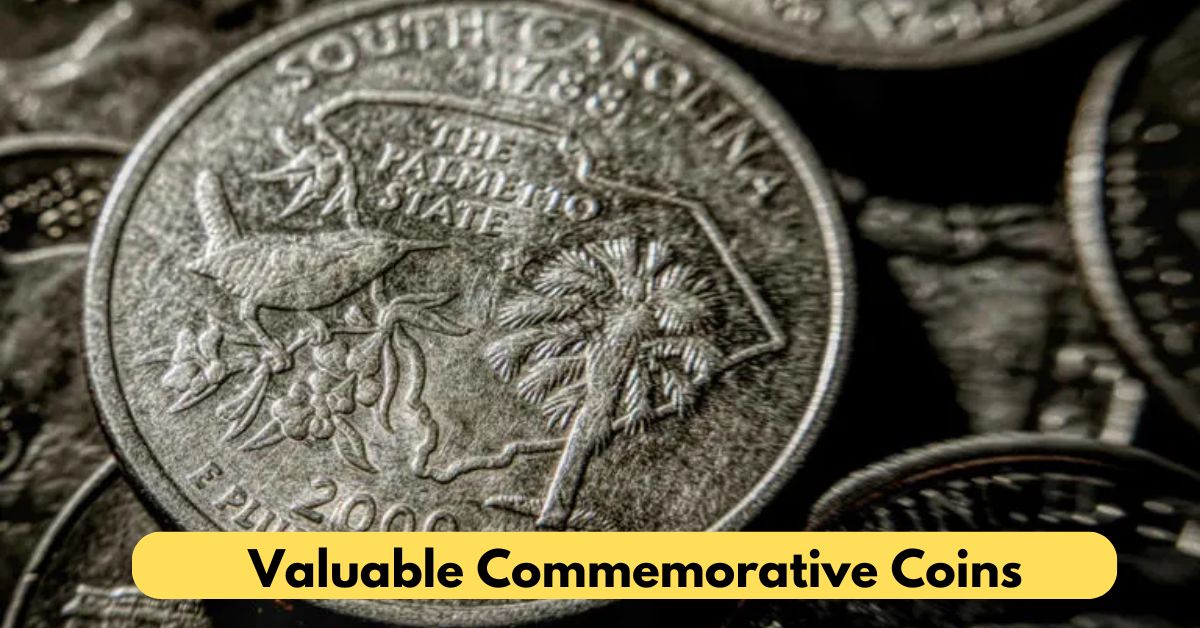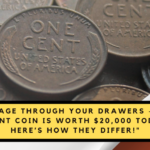The U.S. Mint is renowned for producing the nation’s currency, but it also crafts specialized coins for collectors and investors. Among these are commemorative coins, legal tender designed not for circulation but to celebrate key moments in American history and culture. These coins also serve philanthropic purposes by raising funds for various causes.
A Brief History of Commemorative Coins
Commemorative coins have been part of the U.S. Mint’s legacy since the 1890s. Initially introduced to mark significant milestones, national events, and honor influential figures, these coins have become a collector’s treasure. While earlier commemorative coins hold substantial market value, the modern series, launched in 1982, is more accessible and widely recognized today.
Read More:
Purpose and Impact of Commemorative Coins
The U.S. Mint’s commemorative coins fulfill dual objectives: celebrating America’s history and supporting charitable initiatives. Each coin’s sale includes a surcharge, a portion of which funds specific projects or organizations. For instance, proceeds from the U.S. Capitol Visitor Center coins contributed to the construction of the Capitol’s East Plaza visitor center.
Since 1982, the commemorative coin program has generated over $506,000 in surcharges to support causes such as:
- Preservation of national monuments like the Vietnam War Memorial
- Funding Olympic programs
- Conservation of historical sites
These coins, therefore, transcend their collectible status, acting as tools for philanthropy.
Investment Potential of Modern Commemorative Coins
Commemorative coins, while legal tender, often appreciate in value over time due to their limited production and precious metal content. Many modern commemorative coins feature silver or gold, significantly increasing their intrinsic value. Additionally, some coins gain value from their rarity and high demand among collectors.
Notable examples of modern commemorative coins and their market values include:
- 1995-D Cent. Olympics — Cycling: $135
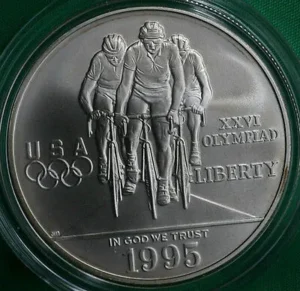
- 1996-D Cent. Olympics — Tennis: $245
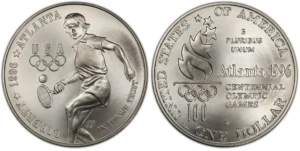
- 1996-D Cent. Olympics — Paralympics: $290
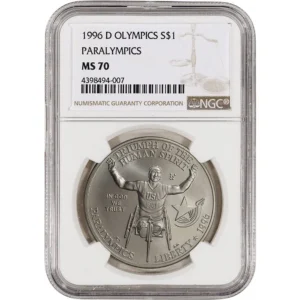
- 1996-D Cent. Olympics — Rowing: $290
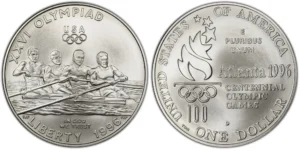
- 1996-D Cent. Olympics — High Jump: $300
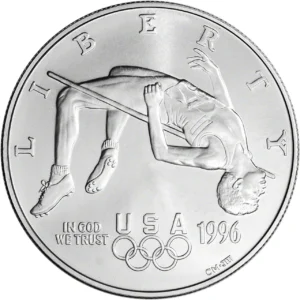
- 1996-S National Community Service: $130

- 1996-D Smithsonian 150th Anniversary: $110
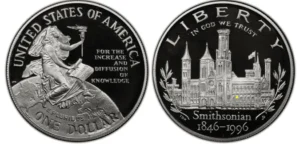
- 1997-P National Law Officers Memorial: $140
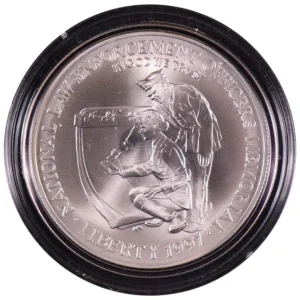
- 1998-S Black Revolutionary War Patriots: $100
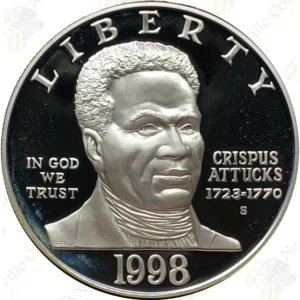
- 2001-D American Buffalo: $210
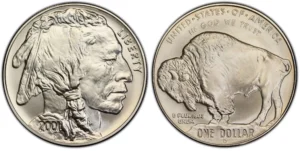
These coins maintain their value due to their unique designs, historical significance, and limited minting. Over time, their rarity may enhance their worth further.
Collecting Commemorative Coins
Commemorative coins provide collectors with a tangible connection to American history. Often available at face value during their initial release, their worth typically increases as they become scarce and demand rises. Whether for investment or commemoration, these coins offer both historical significance and financial potential.
Conclusion
The U.S. Mint’s commemorative coins are more than currency; they are artifacts of America’s heritage. By celebrating the nation’s history and supporting charitable causes, these coins offer meaningful contributions to society. Their limited production and precious metal content further establish them as valuable assets for collectors and investors alike. For those seeking a unique blend of history, philanthropy, and potential profit, commemorative coins are a compelling addition to any collection.
Manish Kumar is a seasoned journalist and the Senior Editor at NewIndiaNetwork.com, with over a decade of experience in uncovering stories that matter. A leader both in the newsroom and beyond, he thrives on guiding his team to deliver impactful, thought-provoking content. When he’s not shaping headlines, you can find him sharing his insights on Twitter @humanish95 or connecting via email at manishdhanda60@gmail.com.

